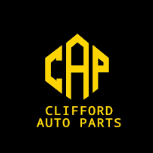-
Welcome to Auto Parts Forum
Whether you are a veteran automotive parts guru or just someone looking for some quick auto parts advice, register today and start a new topic in our forum. Registration is free and you can even sign up with social network platforms such as Facebook, X, and LinkedIn.
GDI Seal Replacement
-
Similar Topics
-
By Clifford Auto Parts
Have you ever been left scratching your head over why your car is stalling unexpectedly, guzzling fuel, or struggling to start? The culprit could be your Engine Control Module (ECM)—the brain of your vehicle’s engine. ECMs play a vital role in controlling essential engine functions, including fuel injection, ignition timing, and emission systems. When this critical component malfunctions, it can lead to significant performance issues or even a complete breakdown.
Common Signs of ECM Failure:
Sudden or repeated stalling while driving Reduced fuel efficiency Check Engine light illuminated with no clear cause Difficulty starting or keeping the engine running What to Do When Your ECM Fails Replacing a faulty ECM doesn’t have to be a daunting task. Start by identifying the exact make, model, and engine specifications of your vehicle to ensure compatibility with a replacement ECM. Using an incompatible unit can lead to further issues, including miscommunication between the ECM and your car’s systems.
Why Quality Matters in ECM Replacements A high-quality ECM replacement can restore your vehicle’s performance and prevent recurring issues. Here are some features to look for in a replacement part:
Rigorous Testing: Choose an ECM that has been tested to meet or exceed OEM standards. Lifetime Warranty: A warranty provides peace of mind and indicates confidence in the product. Fast Shipping: Getting your ECM quickly reduces vehicle downtime. Where to Find Reliable ECMs When searching for a replacement ECM, you want a supplier who offers reliability, competitive pricing, and excellent customer support. Many suppliers claim to provide the best parts, but finding one with a proven track record can make all the difference.
One resource to explore is
link hidden, please login to view, which specializes in high-quality ECMs for a wide range of vehicles. They offer fast shipping, free delivery, and a lifetime warranty on their products—features that can save you both time and money. Join the Discussion Have you experienced ECM issues in your vehicle? How did you identify the problem, and what steps did you take to resolve it? Share your story or ask questions in the thread—let's exchange tips and advice to keep our vehicles running smoothly.
-
By jeff C
I've been looking everywhere for a replacement driveshaft for my automatic 2006 saab92x and I can't find one. Is it even replaceable?

-
By Counterman
The Environmental Protection Agency (EPA) enacted the Clean Air Act to reduce pollution in the late 1960s. Part of the act was to mandate the use of catalytic converters on new vehicles. As these emissions components required replacement, the Clean Air Act was revised to rules to also cover replacement catalytic components.
At the same time, the California Air Resources Board (CARB) proposed a stricter set of rules for new vehicles and replacement emissions parts. This has made replacing a catalytic converter a very litigious process that requires specific steps are covered.
link hidden, please login to viewEnvironmental Protection Agency EPA headquarters Here are the 10 commandments of converter replacement handed down from the EPA.
1. If the replacement is not required by a state or local program, both the customer and technician must sign a statement concerning why the converter was replaced. (Manufacturers either provide such a statement with the converter or have an example in their catalogs.)
2. If the replacement is required by a state or local program, the technician must keep a copy of the statement or order by the program representative.
3. The invoice for replacement must include the customer’s name and complete address, the vehicle’s make, model year and mileage, as well as the reason for replacement.
4. Retain copies of the invoices and statements for six months and the replaced converters for 15 days (converters must be identified or marked as to which customer’s car they came from).
5. Install the converter in the same location as the original.
link hidden, please login to viewChanging the location of the catalytic converter can change the performance. 6. Install the same type of converter as the original — oxidation, 3-way or 3-way plus oxidation (dual-bed). This information is sometimes available on the emission tune-up label or from the manufacturer’s application catalog.
7. Install the proper converter for the vehicle as determined and specified by the converter manufacturer. There are engine-size and vehicle-weight limitations that make it inappropriate to install certain converters on certain vehicles. Newer vehicles with On-Board Diagnostic (OBD) systems may not always operate properly with certain aftermarket products. Therefore, the catalog should always be consulted for the correct application.
8. The converter must always be properly connected to any existing air injection components.
9. Install all the other required converters the vehicle would have originally come with unless the converter manufacturer has stated in writing that the aftermarket converter is designed to replace more than one converter.
10. For new aftermarket converters, the installer must fill out the warranty information card supplied by the manufacturer and give it to the vehicle owner or operator.
Violating the EPA rules is a breach of federal law since noncompliance is likely to increase the amount of pollution coming out of the vehicle. Penalties for violations by individuals, service or repair shops or fleet operators can be up to $2,500 per violation. (Each improper installation is considered a violation.)
Additionally, new-car dealers can be penalized up to $25,000 per violation. Any person who causes a violation could be subject to the same penalty as the technician. New York State Environmental Conservation Law regarding catalytic converter installation mandates a minimum penalty of $500 for a first violation, and up to $26,000 for each subsequent violation. Failure to maintain complete records or submit reports may also result in a violation.
The conditions under which the catalytic converter was installed is of great importance to the part manufacturer. Even simply using the wrong part on a vehicle may allow the converter manufacturer to not honor the 25,000-mile or the 5-year/50,000-mile warranty. For vehicles in California and other states that require California Air Resources Board (CARB)-mandated emissions equipment, the rules are different.
link hidden, please login to view All of the same mandates apply, but they are much more strict about the replacement converter being CARB-compliant. Also, the CARB rules are based on a one-for-one replacement strategy, and the addition or consolidation of converters is forbidden. The greatest difference between states is the length of time needed to keep documentation. California and New York require paperwork be kept for at least four years. Also, it is important to check local and state laws before installation. New York, for instance, enacted a ban on installing used catalytic converters on vehicles.
The post
link hidden, please login to view appeared first on link hidden, please login to view.
link hidden, please login to view
-





Recommended Posts
Create an account or sign in to comment
You need to be a member in order to leave a comment
Create an account
Sign up for a new account in our community. It's easy!
Register a new accountSign in
Already have an account? Sign in here.
Sign In Now